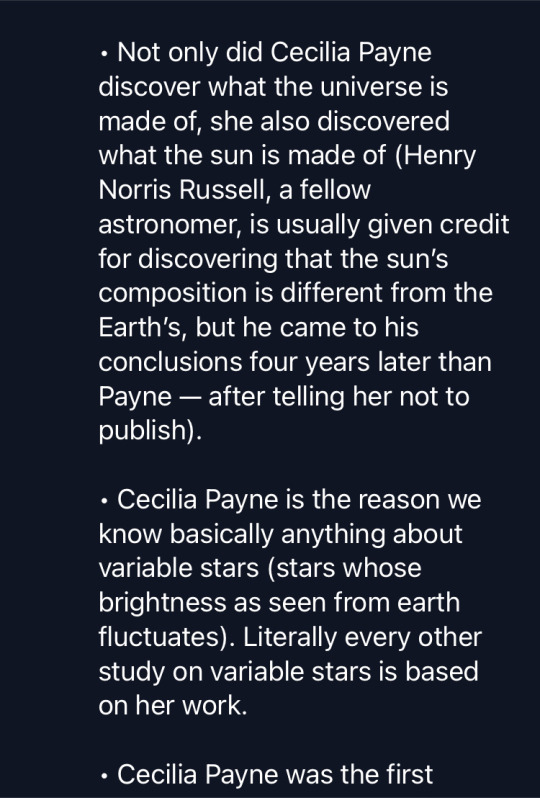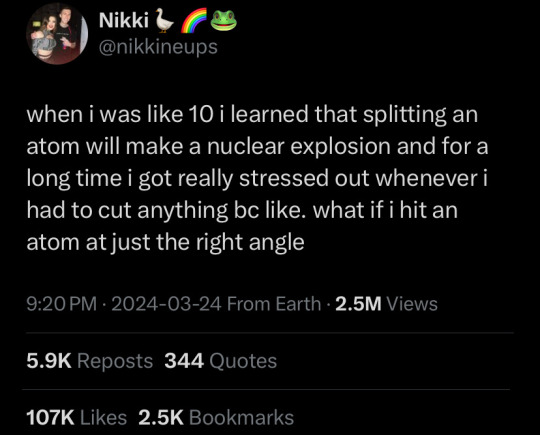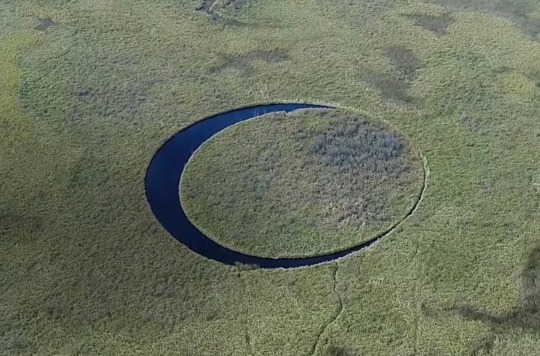#Physical Sciences
Video
n206_w1150 by Biodiversity Heritage Library
Via Flickr:
Edinburgh journal of natural history and of the physical sciences. Edinburgh [etc.] :Published for the proprietor [etc.],1835-1840. biodiversitylibrary.org/page/33665627
#Natural history#Periodicals#Physical sciences#Harvard University#Museum of Comparative Zoology#Ernst Mayr Library#bhl:page=33665627#dc:identifier=https://biodiversitylibrary.org/page/33665627#cats#tiger#lynx#serval#margay#big cats#felis#felis maniculata#taxonomy:binomial=Panthera tigris#flickr
2 notes
·
View notes
Text




31K notes
·
View notes
Text
By weaving popsicle sticks together in a specific pattern, there is a build up potential energy (stored energy) in the bent and twisted sticks. When released from one end, this stored potential energy is converted into kinetic energy (energy of motion) as the sticks rapidly unfurl and fly through the air in a chain reaction.
30K notes
·
View notes
Text

30K notes
·
View notes
Text
look, I know I've talked about this essay (?) before but like,
If you ever needed a good demonstration of the quote "Any sufficiently advanced technology is indistinguishable from magic", have I got an exercise for you.
Somebody made a small article explaining the basics of atomic theory but it's written in Anglish. Anglish is basically a made-up version of English where they remove any elements (words, prefixes, etc) that were originally borrowed from romance languages like french and latin, as well as greek and other foreign loanwords, keeping only those of germanic origin.
What happens is an english which is for the most part intelligible, but since a lot everyday english, and especially the scientific vocabulary, has has heavy latin and greek influence, they have to make up new words from the existing germanic-english vocabulary. For me it kind of reads super viking-ey.
Anyway when you read this article on atomic theory, in Anglish called Uncleftish Beholding, you get this text which kind of reads like a fantasy novel. Like in my mind it feels like it recontextualizes advanced scientific concepts to explain it to a viking audience from ancient times.
Even though you're familiar with the scientific ideas, because it bypasses the normal language we use for these concepts, you get a chance to examine these ideas as if you were a visitor from another civilization - and guess what, it does feel like it's about magic. It has a mythical quality to it, like it feels like a book about magic written during viking times. For me this has the same vibe as reading deep magic lore from a Robert Jordan book.
#off topic#literature#language#linguistics#science#science history#science fiction#fantasy#physics#atomic theory#anglish#chemistry#robert jordan#the wheel of time#uncleftish beholding
43K notes
·
View notes
Text

On June 3rd just before sunrise, a rare event known as the Parade of Planets will occur, where six of the planets of the Sol system will align in a straight line as seen from Terra, giving observers a sense of the alignment of Sol’s orbital disc from their vantage point.
0 notes
Video
undefined
tumblr
143K notes
·
View notes
Text




hey, hi, I was just on the former bird app and came across this info from a brand new study and now I cannot stop screaming internally??? what the actual fuckkkk
theres' an article from the guardian here and here is the actual study:
#period products#menstruation#what the fuck what the fuck!!!#i know i probably shouldn’t be surprised but wtffff#idk what to tag this but#science#menstrual bleeding#heavy bleeding#period problems#reproductive health#alt text#described#physical health#blood mention tw#periods#edit: btw I skimmed the article overview and I’m glad to say it seems very inclusive#so once again: terfs can go fuck themselves in the not pleasant way <3#it always bears repeating and I will ad naseum
39K notes
·
View notes
Text
The long wavelengths of the light spectrum—red, yellow, and orange—can penetrate to approximately 15, 30, and 50 meters (49, 98, and 164 feet), respectively, while the short wavelengths of the light spectrum—violet, blue and green—can penetrate further, to the lower limits of the euphotic zone. Blue penetrates the deepest, which is why deep, clear ocean water and some tropical water appear to be blue most of the time. Moreover, clearer waters have fewer particles to affect the transmission of light, and scattering by the water itself controls color. Water in shallow coastal areas tends to contain a greater amount of particles that scatter or absorb light wavelengths differently, which is why sea water close to shore may appear more green or brown in color.
Follow @scienceisdope for more science and daily facts.
Video credit: Kendall Roberg
47K notes
·
View notes
Text

My latest cartoon for New Scientist
9K notes
·
View notes
Video
n196_w1150 by Biodiversity Heritage Library
Via Flickr:
Edinburgh journal of natural history and of the physical sciences. Edinburgh [etc.] :Published for the proprietor [etc.],1835-1840. biodiversitylibrary.org/page/33665617
#Natural history#Periodicals#Physical sciences#Harvard University#Museum of Comparative Zoology#Ernst Mayr Library#bhl:page=33665617#dc:identifier=https://biodiversitylibrary.org/page/33665617#weasels#ferrets#ermine#mammal#flickr
0 notes
Text
I did a post asking about this ages ago, but now that there's polls, I'd like to do another round for this question, since it always has me curious:
Also, I am not including stuff like "I just stay up thinking about things that make me anxious", since this is specifically about things that help you sleep, not things that keep you up!
Just curious how widespread this practice is!
#poll#hopefully this goes over much better than the last one lol#I really wish someone would do a science with this#it seems like the necessity of fiction to our physical health could be a neat thing to study#sleep#imagination#storytelling
3K notes
·
View notes
Text
Hey, so--we cooled your boyfriend down to a hundredth of a kelvin above absolute zero. Yeah, it was so cold that all of the chemical reactions in his body ceased. Sorry. We, uh, yeah, we used him as a dielectric material in a tiny qubit. And then we quantum-entangled him with another qubit, just to see if we could. Sorry. Yeah, anyway, we thawed him out after two weeks and apparently he's doing fine now. Didn't really teach us anything about how quantum processes work in biological systems, but it sure was, uh, cool. If you'll pardon the pun.
8K notes
·
View notes
Text
The whole “scientists use big words on purpose to be exclusive” is such a bunch of anti-intellectual bullshit. Specific and concise language exists for a reason; you need the right words to convey the right meaning, and explaining stuff right is a hugely important part of science. Cultures that live around loads of snow have loads of words to describe different types of snow; cultures that live in deserts have loads of words to describe different types of sand. Complex language is needed for complex meaning.
20K notes
·
View notes
Text


El Ojo ‘The Eye’ Island Location: Buenos Aires, Argentina
First discovered by Argentinian filmmaker Sergio Neuspiller in 2003, El Ojo is an uninhabited circular rotating floating island located within a slightly larger circular lake in the Paraná Delta in the Buenos Aires Province, Argentina. This island is constantly rotating on its own axis due to the flow of the river beneath it. The island was named because of its resemblance to an eye when viewed from above: as the island rotates within its surrounding circular lake, the eye appears to move.
#buenos aires#argentina#water#physics#planet#planet earth#nature#science#sciencecore#interesting#aesthetic#earth#eye#eyecore#weirdcore#weird#phenomenon#weird phenomenons#strange#places#google earth#weird places#weird stuff#watercore#lakes#lake#water aesthetic#nature aesthetic#geography#illusions
7K notes
·
View notes

